«Aerogel Architecture Award 2024»
Subtle renovation thanks to aerogel applications in construction
On July 12, the Aerogel Architecture Award was presented for the fourth time on the Empa campus. A total of six projects were awarded in the categories “Realized Solutions” and “Student Projects”. They all show applications of aerogel materials in architecture and construction projects that enable major savings in terms of heat loss and energy consumption mitigation through minimal intervention in the building fabric and appearance. The winners are a realized building from Italy and a student proposal from Brazil.
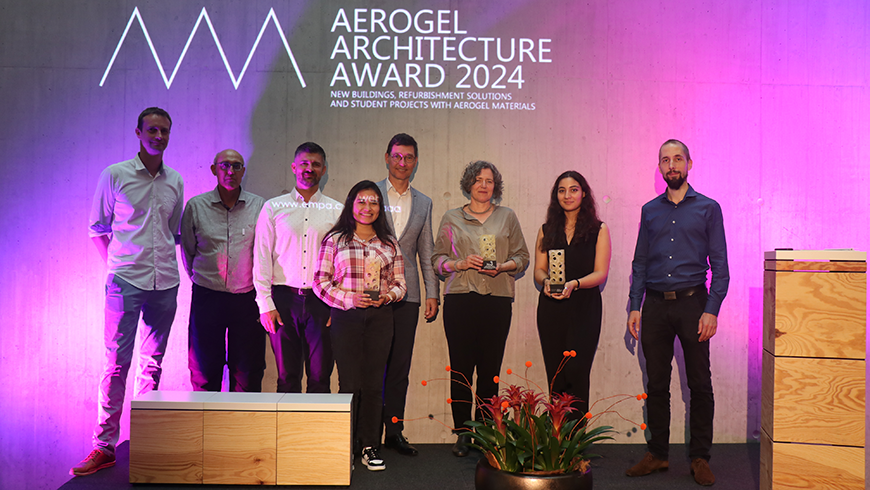
For this year's Aerogel Architecture Award, projects were sought that exemplify how the high-performance insulation material aerogel is used in the renovation of historic buildings as well as in architecture and construction in general. From a total of 31 submissions for the two categories “Student Projects” and “Realized Solutions”, the expert jury nominated three projects each. Representatives for the three realized projects were invited to the award ceremony at NEST, the research and innovation building of Empa and Eawag.
Energy-efficient refurbishment of historic buildings
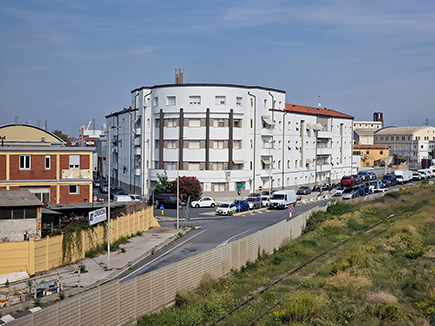
In the category Realized Projects, five entries were submitted: one from China, one from Italy and three from Germany. In the end, the “Stringi-Stringi” project from Livorno, Italy, came out on top. This is a renovation project for the social housing building of the same name, which was realized by the architectural firm SB Ingegneria. In order to optimize the energy efficiency of the poorly insulated building from 1939, five decisive interventions were made to the structure: The roof was fitted with a 140mm thick foam insulation and the façade was refurbished with EPS 100 graphite as well as a 50mm aerogel layer. The old gas heating system was replaced by a heat pump and a photovoltaic system was installed on the roof. Finally, the windows were replaced and sealed with a 10mm aerogel blanket. According to the architect, Serena Braccini, the use of aerogel was particularly essential for the renovation of the façade of the V-shaped building. Its flexibility allowed it to insulate the curved façade without changing its appearance.
The jury was also impressed by this use of the high-performance aerogel material: “The building by architect Ghino Venturi, which is typical of the fascist era, could be brought up to today's energy standards without compromising its visual character,” said jury member Volker Herzog, summarizing the jury's decision. In addition, the building as a whole system has been made fit for the next century.
Second place went to the Eversbuschstrasse kindergarten in Munich. The team from the architectural firm bodensteiner fest Architekten was tasked with refurbishing the 120-year-old building, which had recently stood empty for 20 years, using the simplest possible means to give it a new lease of life. In future, it will be used as an integration kindergarten, whereby the limited space was a major challenge in the planning, according to the lead architect, Annette Fest. The preservation and reuse of existing materials and structures was central to the project, with the highly thermally insulating Aerogel material offering the greatest possible freedom.
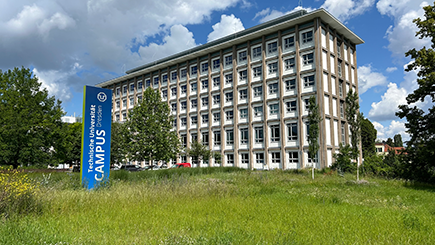
Third place on the podium went to the renovation of the Andreas Schubert building at Dresden University of Technology, carried out by IPROconsult. The faculty building, built in 1959, is a listed building and therefore had to be renovated while preserving its material structure. It consists of a load-bearing concrete frame into which thinner concrete panels and windows are integrated. As part of the renovation measures, the concrete panels were fitted with a 50mm-thick aerogel insulation and new windows were installed. These measures reduced heat loss by around 75 percent while preserving the characteristic façade.
Visionary projects that touch people's hearts
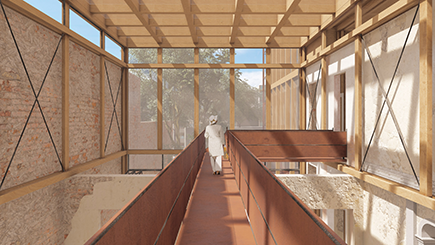
There was great diversity among the 26 student projects submitted from various countries. The Tassi Museum project by students Amanda Sayuri Hashimoto and Guilherme Pinheiro e Silva from Brazil was awarded first place. Their concept involves completely renovating the former Hotel Tassi in Curitiba, which was extensively devastated by a fire, and transforming it into a museum. In this way, they want to do justice to both the original architecture and the history of the building. To this end, they have proposed supporting the old, partially damaged brick wall with a new wooden structure. Aerogel insulation attached to the existing façade ensures that the building can literally “breathe”, significantly improving thermal insulation without allowing moisture to form between the outer and inner walls. In addition to the façade insulation, the project provides for a roof over the inner courtyard, which consists of a 30mm-thick aerogel layer within two panes of glass. This allows daylight to enter the inner courtyard, which can be used regardless of the weather. The jury sees these two applications as the optimal use of the innovative aerogel material, whereby “a maximum of the existing building and its structure is preserved”, according to jury member Beat Kämpfen. The combination of the old brick wall, which remains visible, and the new wooden structure, which gives the façade additional stability, was particularly well received.
Second place went to the project by Patricia Malota from Poland. Based on the idea that architecture has a direct impact on people's psyche, she designed an urban mental health center in Krakow, which largely features translucent aerogel façades. According to the jury, the therapy rooms in particular benefit from a bright, inviting atmosphere, while privacy is guaranteed at all times.
Third place went to the concept by Michael Chang and Adrian Corbey from Harvard University in Cambridge, USA. With their “Aeroblock”, they present an innovative solution to a fundamental problem of the Carpenter Center for Visual Arts, which was completed in 1963 and was designed by the Swiss architectural icon Le Corbusier: The timeless building boasts a façade made of glass blocks, which, however, have no insulation whatsoever. As a result, the interior is subject to strong temperature fluctuations. Using new “aeroblocks” to replace the glass blocks, the two students have given the façade contemporary insulation without compromising its fascinating appearance.
In addition to the awards, the top 3 student projects also received prize money of CHF 1500, CHF 1000 and CHF 500.
The Aerogel Architecture Award
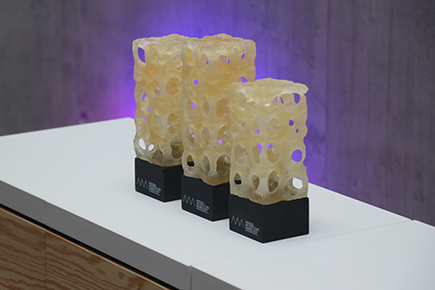
The Aerogel Architecture Award was initiated by Empa in 2020 and made possible in 2024 by the industry partners Agitec, Fixit, IBIH and Hasit. 26 student and 5 realized projects from various countries were submitted for the 2024 competition. A jury consisting of architects Beat Kämpfen (Switzerland), Volker Herzog (Germany) and Manfred Wehdorn (Austria), as well as aerogel expert Michael O'Connor (France), assessed the submitted projects in terms of the preservation of cultural heritage, energy efficiency and the originality of the chosen solution. However, the jury always focused in particular on the pragmatic question: To what extent does the chosen measure make sense for the project in question?
Further information on all the projects submitted can be found on this website.
Dr. Michal Ganobjak
Building Energy Materials and Components
Phone: +41 58 765 60 32
Dr. Samuel Brunner
Building Energy Materials and Components
Phone: +41 58 765 47 68
Christoph Stapfer
Communications
Phone: +41 58 765 61 25
Images in high resolution can be downloaded here.
-
Share







